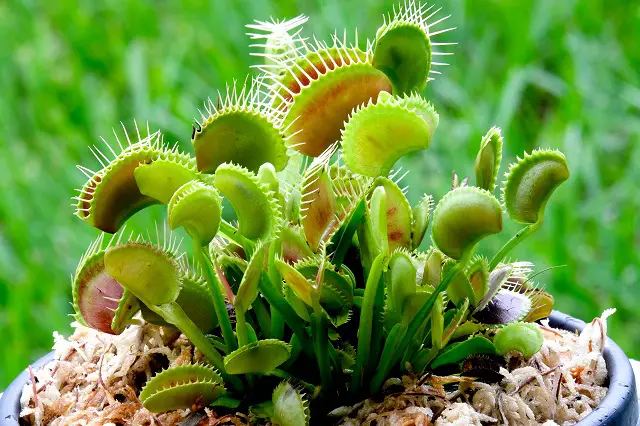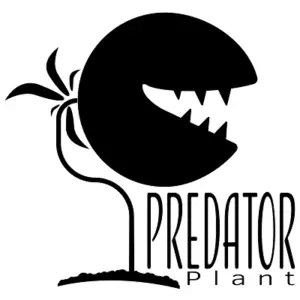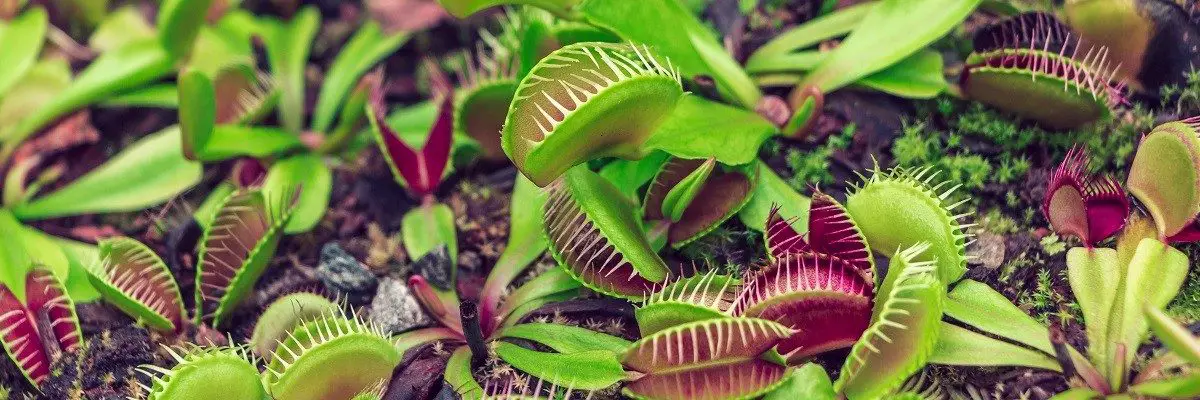Venus flytraps are native to the United States. Bogs, swamps, and other nitrogen-deficient environments are home to this species. Typically, it is found in North Carolina and South Carolina, but populations have also been found in New Jersey and northern Florida. It is not a tropical plant, as many people believe, and needs a dormant period in the winter to survive.
Venus flytraps are carnivorous plants that catch and digest insects for their nutritional needs. Whenever the insect triggers the hairs on the plant, the trap closes, capturing the insect. The Venus flytrap is a popular garden plant with a very small natural habitat.
Venus Flytraps Habitat
Venus flytraps are small and slow-growing plants that tolerate fire well. Their growth is suppressed by periodic burning. Typical habitats for the Venus flytrap include bogs, savannahs, and wetlands with low nitrogen and phosphorus levels.
Sand and peaty soils are suitable for it. Plants of this genus have been cultivated worldwide. Still, they are native to the bogs of Southern and Northern Carolina within the United States, more specifically within a 100-mile area of Wilmington, which is in northern Carolina.
The Green Swamp in North Carolina is one such place. In addition to Venus flytraps in western Washington, northern Florida has a naturalized population. The soil is nutritionally poor, so it relies on its traps: insects provide the nitrogen necessary to form proteins that soil cannot. Venus flytraps do better in mild winters; without a period of winter dormancy, they will weaken and eventually die.
It thrives in microhabitats that are typically sparse with grasses, herbs, sphagnum, and bare patches lacking enough nutrients for noncarnivorous plants to survive, or where fires periodically clear competition, preventing the cover from forming.
Characteristics of a Venus Flytrap
Venus flytraps are one of nature’s most intelligent plants. Since most plants have evolved to survive in conditions with little soil nutrition, they capture and decompose small insects for food. There are several species of carnivorous plants, but the Venus flytrap is perhaps the most fascinating.
It is a herbaceous perennial that grows very slowly. It has two distinct types of leaves – a flat leaf and a good trap on the end. The leaves change in shape in the winter and die every year. Also, your plant will produce different kinds of leaves throughout the year, so don’t be surprised if your plant’s appearance varies from season to season.
It may seem like you’ve killed your flytrap at this point, but it’s just going into dormancy for the winter and will reshoot in spring. There is an underground bulb-like structure from which the leaves sprout. In a cold climate, the leaves would shrivel up and turn black.
The trap uses an ingenious mechanism. If an insect brushes against the tiny hairs in the trap, it closes, trapping the insect inside. The insect is dissolved by releasing digestive juices from the trap, reducing it to liquid fertilizer.
It is necessary to touch two hairs within 20 seconds of one another in order to trigger the trap. The digestive cycle begins when the trap closes, and the hairs are triggered five times more.
Growing locations at home for your Venus Flytrap
Direct sunlight is necessary for the growth of Venus flytraps. If you’re growing your plant indoors, find a sunny windowsill. Your flytrap’s leaves will become weak and floppy if there is insufficient sunlight, and its inner traps won’t be red. Terrariums aren’t necessary for them to thrive, although they often enjoy the higher humidity of enclosed environments. Terrariums are good if you respect their winter dormancy requirements (see below) and provide ample lighting.
Artificial lighting can be effective, particularly high-power fluorescents like T5 grow lights.
Conservatories and greenhouses without heat can grow them exceptionally well. In the Carolinas, summer temperatures often reach 30°C (86°F), and winter temperatures drop below 0°C (32°F).
Throughout the growing season, most Venus Flytraps produce different types of leaves. Plants produced at the beginning and end of the growing season (spring and autumn) have shorter heart-shaped petioles. In contrast, those produced in summer are held higher on narrow, elongated petioles.
Venus Flytraps need pure water, just like many other carnivorous plants. If you provide your Venus Flytrap with bottled, filtered or tap water, they will eventually build up minerals and die. This is also why you should avoid fertilizers. Your best choices are water produced via reverse osmosis, rainwater, distilled or deionized water, or distilled or deionized water.
Growing them requires moist soil but not completely flooded. You should keep your pots in a layer of water of about 1 cm (13 inches) (do not water from the top) during the growing season. A little moisture should be applied to the soil during winter to keep it from drying out.

Venus Flytrap In Winter
The Venus Flytrap requires a cold winter dormancy to survive. Like every night you need to sleep, Venus Flytraps must go dormant during the winter! Providing a cold resting period is necessary to mimic the conditions found in their natural habitat.
During the growing season, you will need to move your plants from a windowsill or terrarium into a cooler environment – place them next to a window in your garage or shed, for example. During the winter, plants grown in unheated greenhouses can remain there.
Your plant will start turning black and dying back to the roots as the days shorten and the temperature drops. No harm done; trim off the dead growth. If your plants need to be repotted or even divided, now is the time to do so after winter dormancy has ended. An adult plant requires a pot of 10 cm (4 inches).
Feeding Venus Flytrap
The Venus Flytrap can catch more than enough food if grown outdoors. In the case of indoor plants, you can feed them dead or live insects, but you should only do so after you have provided them with all their other requirements. It is necessary to stimulate the trigger hairs after the Venus Flytrap’s trap has closed to digest prey properly. This will prevent the plant from wasting energy trying to digest non-edible material that may have fallen into the trap.
Conclusion
The Venus flytrap lives in the wet, open longleaf pine savannas, where burning is needed. Trees and shrubs become established in habitats where a fire is uncommon, blocking sunlight from smaller plants like Venus flytraps. On top of this, longleaf pine forests no longer cover much of the Coastal Plain as they once did.
Venus flytraps are also poached in North Carolina, where they are considered a “Species of Special Concern.” Even though poaching them has always been illegal, the state enacted new laws in 2014, making it a felony. The species of Venus flytrap is not protected as a threatened or endangered species.


